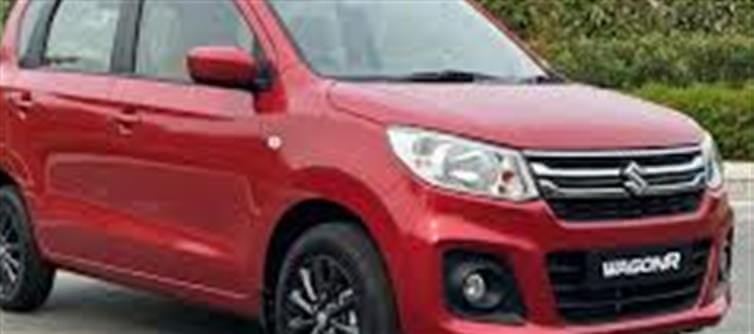
In august 2025, the indian hatchback segment experienced a significant year-on-year (YoY) decline, with total sales dropping by 11.63% compared to august 2024. Despite this slowdown, Maruti Suzuki’s WagonR continues to dominate the market. Here's a closer look at the situation and the key factors contributing to the decline in hatchback sales.
1. Overall Hatchback Sales Drop
According to industry reports, India's hatchback segment sold 73,463 units in august 2025, down from 83,129 units in august 2024. This 11.63% drop represents a volume loss of 9,666 units, signaling a significant slowdown in demand for hatchbacks compared to the previous year.
2. wagonr Continues to Lead
Despite the overall decline in sales, the Maruti Suzuki WagonR continues to be the top-selling hatchback in India. The WagonR's blend of practicality, reliability, and affordability has kept it a favorite among buyers. With the decline in hatchback sales, WagonR has maintained its stronghold, benefitting from Maruti's reputation for low maintenance costs and high resale value.
3. Why Are Hatchback Sales Declining?
Several factors have contributed to the decline in hatchback sales in august 2025:
· Shift Toward SUVs: indian consumers are increasingly opting for SUVs and crossovers, which offer more space, higher ground clearance, and an elevated driving position. The growing popularity of these vehicles has put a strain on the traditional hatchback segment.
· Rising Prices: The prices of hatchbacks, particularly entry-level models, have been steadily rising due to inflationary pressures, increased raw material costs, and the introduction of newer features. This has made hatchbacks less attractive to budget-conscious buyers.
· Changing Consumer Preferences: Consumers are leaning toward more versatile vehicles that suit a wider range of needs. hatchbacks, with their smaller size, are no longer perceived as the best option for larger families or those seeking higher driving comfort.
4. WagonR's Continued Success
The WagonR has been a consistent performer in the hatchback segment for many years. Despite the slowdown, it continues to lead the pack for several reasons:
· Affordability: The wagonr is one of the most budget-friendly options in the market, offering great value for money.
· Fuel Efficiency: With rising fuel costs, fuel efficiency remains a top priority for indian car buyers, and the WagonR's low running costs make it an attractive option.
· Practicality and Space: The WagonR's spacious cabin, practical design, and easy-to-drive nature have kept it popular, especially among urban families and first-time car buyers.
5. Competitors Struggling to Keep Pace
While the wagonr remains a top contender, other hatchback models are struggling to maintain sales figures. Competitors like the Hyundai Santro, Tata Tiago, and Honda Jazz have all faced challenges in a shrinking market. These models are seeing lower volumes as more buyers switch to compact SUVs or more premium offerings.
6. SUVs and Crossovers Take the Lead
The rise of compact SUVs such as the Tata Nexon, Maruti Suzuki Brezza, and Hyundai Venue has played a pivotal role in the decline of hatchback sales. These SUVs provide higher ground clearance, more space, and a sense of prestige—traits that appeal to the modern indian buyer. The shift to SUVs has been one of the key reasons why hatchback sales are experiencing a downward trend.
7. Economic Factors at Play
The decline in hatchback sales could also be influenced by macro-economic factors such as rising inflation and interest rates. Higher interest rates have made car loans more expensive, which could discourage potential buyers, especially those looking for entry-level vehicles. This shift could result in fewer hatchbacks being purchased in favor of more expensive, feature-rich alternatives.
8. The Future of hatchbacks in India
Despite the current decline, hatchbacks are not likely to disappear anytime soon. In fact, they will continue to appeal to specific segments, especially first-time buyers, urban dwellers, and those looking for fuel-efficient city cars. The segment might experience a rebound as new models with better features, electrification options, and competitive pricing are introduced.
· Electric Hatchbacks: As electric vehicles (EVs) gain popularity, the future of the hatchback segment could see more electric options. Companies like Tata Motors and Maruti Suzuki have already begun testing the waters with electric hatchbacks, which could bring renewed interest to the category.
· Improved Features and Technology: Manufacturers are also adding new features like connected technology, advanced safety features, and upgraded interiors to make hatchbacks more appealing to modern buyers.
9. Conclusion: A Mixed Outlook
The decline in hatchback sales in august 2025 reflects the shifting dynamics in India’s automotive market. While SUVs and compact crossovers are now the preferred choices for many, Maruti Suzuki’s WagonR continues to hold its ground. The hatchback segment is likely to evolve with new models, more feature-rich options, and possibly a focus on electric variants to meet the demands of future consumers.
The decline in hatchback sales is a clear indication that the indian automotive landscape is changing, but with models like the Maruti WagonR leading the pack, the segment is far from obsolete. Buyers’ tastes may shift, but hatchbacks still offer a compelling choice for many consumers, especially in urban environments.
Disclaimer:
The views and opinions expressed in this article are those of the author and do not necessarily reflect the official policy or position of any agency, organization, employer, or company. All information provided is for general informational purposes only. While every effort has been made to ensure accuracy, we make no representations or warranties of any kind, express or implied, about the completeness, reliability, or suitability of the information contained herein. Readers are advised to verify facts and seek professional advice where necessary. Any reliance placed on such information is strictly at the reader’s own risk..jpg)




 click and follow Indiaherald WhatsApp channel
click and follow Indiaherald WhatsApp channel